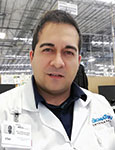Features Articles

 Simple fixes are often the best solution for small variances.
Simple fixes are often the best solution for small variances.
In a perfect world, manufacturing process setup should eliminate the potential for mistakes. In practice, however, process complexity and the impact of system variation makes that impossible. Consequently, organizations committed to the efficiencies of Lean manufacturing often use a range of tools to identify and eliminate defect opportunities from their process.
SigmaTron International’s Tijuana, Mexico, facility uses a number of these tools in this process. During project launch, advanced product quality planning (APQP) failure mode and effects analysis (FMEA) is used to set up the most efficient, defect-free process. The product part approval process (PPAP) is used on automotive projects to validate the process, while customer-specific validation processes are used for projects in other industries. Once production is ongoing, statistical process control (SPC) and other forms of quality data collection and monitoring are utilized to monitor processes and track defects. When defects occur, a kaizen event is scheduled, and tools such as 8D problem-solving, Six Sigma’s Define-Measure-Analyze-Improve-Control (DMAIC) and poka yoke are applied to analyze and correct the root cause.
 Are we headed toward Singularity? Or just more PowerPoints?
Are we headed toward Singularity? Or just more PowerPoints?
Thus says IPC:
The Hermes Standard Initiative is happy and glad to announce that IPC has confirmed to recognize The Hermes Standard to be the successor to “the SMEMA Standard” IPC-SMEMA-9851, which has been the only globally accepted and broadly established standard for machine to machine communication in SMT with regard to PCB handover. Accordingly, The Hermes Standard was assigned an IPC naming code: It can now officially be referred to as IPC-HERMES-9852.
This strong acknowledgment means a lot for further enhancements of the global footprint and acceptance of The Hermes Standard. With The Hermes Standard having shown an impressively fast start from early drafts to worldwide awareness, it is now entering the second stage in global market penetration.
 Faced with a host of software and machines, is a data-driven electronics shop a pipe dream?
Faced with a host of software and machines, is a data-driven electronics shop a pipe dream?
Over the December holidays I had an epiphany: My company is just like a Christmas tree!
My epiphany occurred amid the annual ritual of putting up holiday decorations. Like every year over the past decades, a freshly cut tree is proudly lugged into a prominent place in the house. In a water-filled stand the tree majestically fills the room with a rich pine smell as decorations are pulled from storage and readied to adorn it. When decorating a Christmas tree, the first step is putting the lights on. And every year that begins by taking lights that worked flawlessly the previous year, unraveling them and testing they still work. And like all previous years, the result is the same: most light, some do not.
This leads to the next ritual: figuring out why. This entails fidgeting with bulbs and fuses, and hours lost determining whether it would be easier to just replace one of the strings. Even with new lights, however, the problem can occur, prompting a similar ritual of triage, exploration, frustration and finally, success. “Success” often means (reluctantly) living with a tree that may have something like 588 of the 650 lights working. In the end, creative placement of decorations to camouflage the missing lights is an invaluable talent.
 With every Apex comes an outpouring of new standards, and this year’s conference was no exception.
With every Apex comes an outpouring of new standards, and this year’s conference was no exception.
As the demands of PCBs for automotive applications assert themselves as a unique class, the industry standards are being adapted in sync. To that end, IPC-6012, the longstanding bare board qualification spec, now has an automotive supplement, reflecting the “superclass” of reliability for that sector above and beyond Class 2.
Given that auto electronics are shrinking, the IPC task group has eliminated visual inspection in favor of AOI on all layers and recommends use of AVI (automated visual inspection) of the finished PCB.
The cleanliness testing requirement has also been rewritten. The automotive addendum includes a recommendation of tests to be used in Production Part Approval Process (PPAP) documentation.
0201mm chip capacitors and resistors are entering production now in advanced package-in-package modules and should soon become widely used in ordinary printed circuit board designs.
Press Releases
- 2026 IEEE Electronic Components and Technology Conference Student Innovation Challenge Pre-registration Deadline Extended to January 11, 2026
- PCBsync PCB Assembly Introduces Full-Scale Electronic Manufacturing Service
- Magic Leap Partners with Pegatron for AR Glasses Components Production
- TEXMAC/Takaya Appoints ARK Mfg. as New Rep in Arizona


